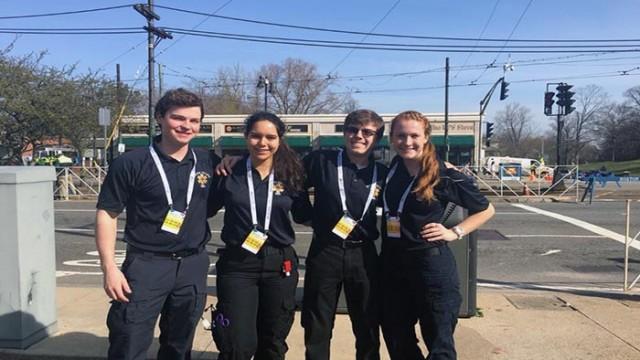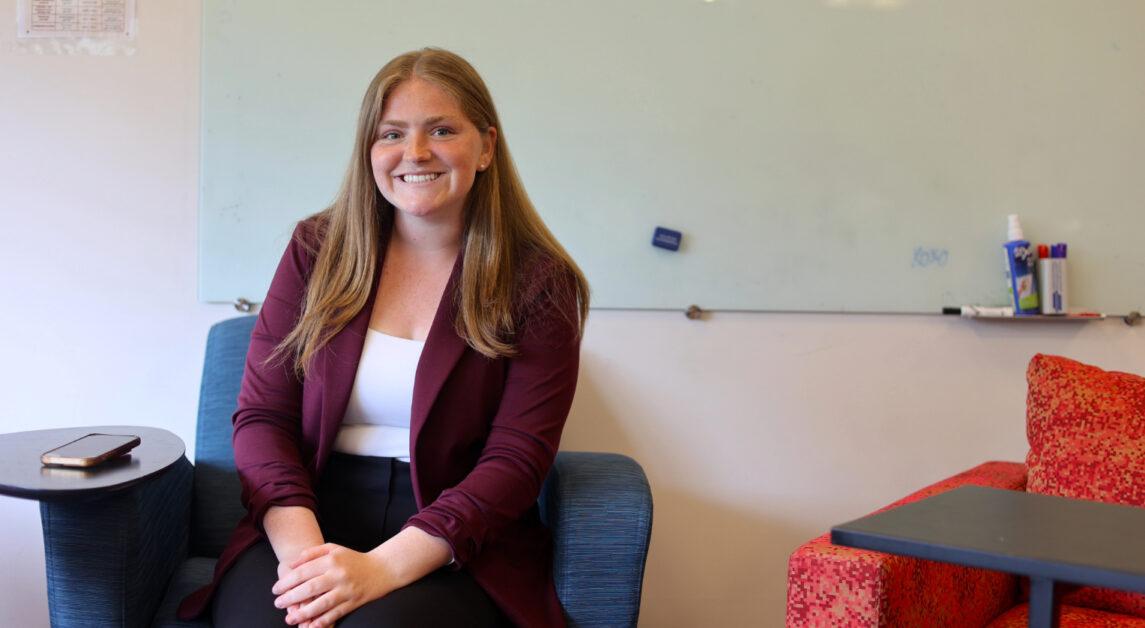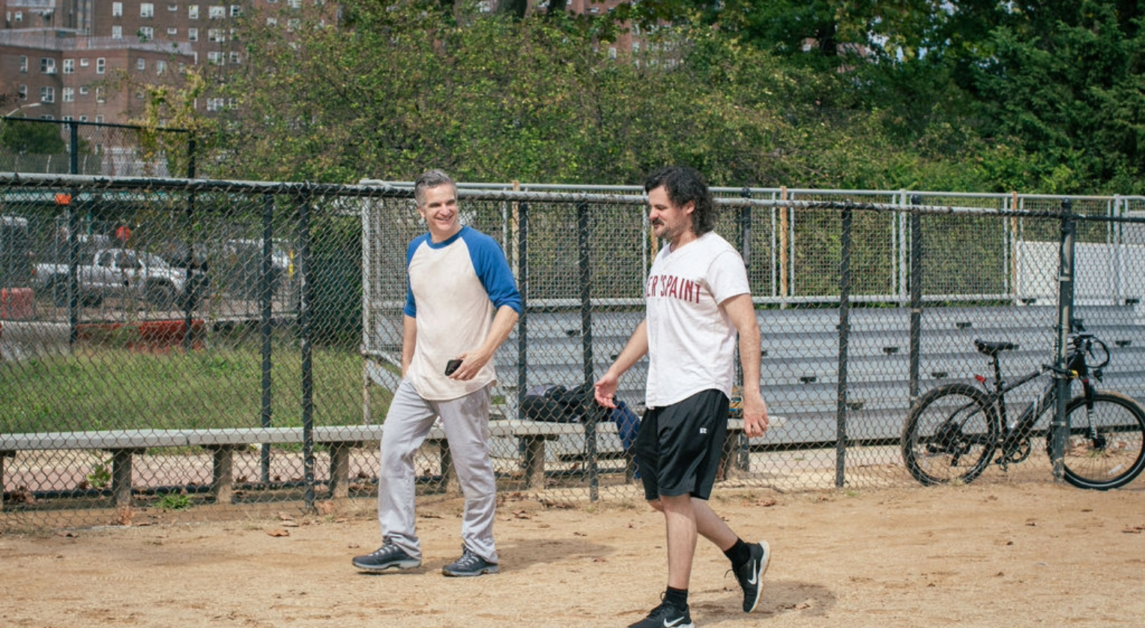Kevin Eidt, BC ’00, only had eyes for the basketball net looming over his head. Only a second-semester freshman, Eidt was already involved in the men’s intramural basketball team and competed regularly in the Plex. He had his heart in the game, but little did he know just how much of an impact his heart would have on the Boston College community.
While playing a game, Eidt went into sudden cardiac arrest and collapsed on the court. His close friend, Mark Ritchie, BC ’00 and a certified EMT, witnessed the fall and immediately began to perform CPR on Eidt, accompanying paramedics as they transported Eidt to the nearest hospital. Despite their attempts to revive Eidt, he ultimately passed away because of heart failure. Heartbroken, Ritchie founded Eagle EMS to care for BC students, and over the past 16 years, the student organization has developed into a respected on-campus authority while maintaining a casual student air.
After acquiring its own first-response vehicle in 2012, Eagle EMS began 24/7 coverage of the local community and changed its name to BC EMS in Nov. 2014. Boasting 76 current members, BC EMS remains a completely student-run organization that holds the same state certifications as professional ambulance companies. The organization is divided into the departments of education, operations, and organizational development. The president and vice president oversee the organization as the members of the departments plan specific tasks.
EMTs work both vehicle shifts, responding to emergency calls and performing on-site medical care, and standby shifts, attending games, concerts, and other major campus events and monitoring the audience. BC EMS works closely with University officials, such as the offices of the Dean of Students, Student Health Services, Student Involvement, Emergency Management, and BCPD, as well as with professional ambulance companies from the local community. These established relationships are best seen in their involvement in the Boston Marathon.
“Our involvement in the Marathon has greatly increased throughout my time here,” said Kevin Zirko, LSOE ’16 and current president of BC EMS. He recalls the Marathon bombing in 2013 as a definitive moment for BC EMS that elevated the student organization to a new professional level.
Until that point, BC EMS had mainly focused on monitoring campus, running a medical tent to treat BC students and distributing foot teams throughout Main, Newton, and Brighton campuses. In the aftermath of the bombing, all available medical resources were requested to treat the wounded at the finish line. The Boston Athletics Association (BAA) stopped the Marathon and housed runners at St. Ignatius Church. With medical resources already spread thin, it was up to the remaining members of BC EMS to triage over 400 patients in the makeshift clinic, bringing new meaning to the place of healing.
“For an hour or so, we were completely in charge, which was a huge test for the organization,” Zirko said. “We were able to step up, and it definitely makes you realize how important we are and how [we’re more than just for] BC.”
Because of its performance that day, BC EMS has been included in the BAA planning committee each year, with members from the organization helping to plan the medical response along the entire route of the Marathon. In addition to its usual campus coverage, BC EMS staffs five to six students at three medical tents at the end of College Road, in front of St. Ignatius Church, and by the Chestnut Hill Reservoir for the Marathon.

Grace Jarmoc, MCAS ’18, worked as the command post representative for BC EMS in the BCPD office, supervising the crews throughout the day. Before the Marathon, Jarmoc debriefed the EMTs working the event on Marathon Monday protocols, teaching them what illnesses to expect and running through practice scenarios. Once Jarmoc received an emergency call in the BCPD office, she would dispatch the team closest to the location of the call to take care of the patient. This responsibility necessitates discipline and organization, which Jarmoc said has benefited her work ethic as a student. Being busy has helped her stay organized, she said.
“One of the more difficult things of being an EMT, especially at BC, is also being a student,” Jarmoc said in an email. “I’m always trying to find the right balance between my life at school and my passion for BC EMS.”
Hannah Bowlin, MCAS ’17, and Olivia Spadola, CSON ’17, were in charge of BC EMS’ first-response vehicle and answered calls from the BCPD office. The most common locations for EMTs to go to on Marathon Monday are the Lower bathrooms, the Mods, and along the BC side of the Marathon route, to treat for alcohol-related head injuries. The EMTs would immobilize the patient’s head to prevent further injury to the neck or spine, look for other wounds, take vitals, and decide with BCPD if hospital transport is necessary.
“The most difficult part of being an EMT is tailoring my subjective assessments for each patient I encounter, because no two people or medical issues are the same,” Spadola said in an email.
“[You have to make sure] you don’t miss any red flags,” Bowlin also said in an email. “Many patients are fairly routine and treating them can be normal, but staying on my toes and making sure we don’t miss anything important for a more serious issue can be difficult.”
Nicholas Favazza, MCAS ’18, treated Marathon runners at the BAA tent in front of St. Ignatius. His team was responsible for assisting a physician, a physician’s assistant, and a physical therapist by performing initial patient assessments for runners who stopped by the tent. The most common health problems marathon runners faced with the warm weather were heat-related, such as fatigue, heat stroke, dehydration, and hyponatremia. The EMTs were tasked with massaging cramped muscles, providing ice baths, and supplying beverages high in electrolytes to replace necessary water and nutrients.
“Working in medicine, your actions have an obvious effect on patient outcome, good or ill, and you always want to do right by your patient and give them a shot at recovery,” Favazza said in an email. “The pressure to perform is definitely there, and although it is stressful, I think it also helps motivate me to provide the highest quality care possible.”
Throughout their time with BC EMS, the students agree that having an EMT license has meant more than another credential to put on a resume. BC EMS encourages personal and professional growth, with the students’ exposure to the love and dedication of professional EMTs shining light on a side of health care that is often overlooked.
“Pre-hospital care still has a significant effect on patient outcome,” Favazza said. “Being a member of that pre-hospital team and seeing that my actions allowed a patient to make it to definitive care and recovery is one of the most rewarding things I have ever experienced in my life.”

Under the pressed uniforms, pounds of medical equipment, and crackling radios, the EMTs are still students at heart. For Zirko, the hardest and most rewarding aspect of being in EMS is helping his peers.
He regards being a student EMT as an advantage for the patient, as he or she can advocate for both student and patient rights, and this belief has been supported by the patients’ gratitude at receiving treatment.
“I was so surprised by how rewarding the job is,” Jarmoc said. “Hearing someone genuinely say ‘thank you’ after you cared for them makes the job worth it 10 times over.”
It is also part of BC EMS’ mission to advocate for public health, teaching first-aid classes and providing first-aid kits for other organizations throughout Boston and the surrounding area, such as the Horace Mann School for the Deaf and various homeless shelters. Though most students initially join BC EMS for medical exposure, many fall in love with the administrative and community aspects of BC EMS, all in the effort to provide care for the whole person.
“There’s so much more to our organization that I’d love for people to recognize,” Zirko said. “Yes, we may be there when your friend is drunk, but we aren’t there to get them in trouble—we’re there to help them get out of trouble.”
For such a young organization, BC EMS has come far—from the initial heartbreak on the basketball court to the top of Heartbreak Hill. The organization remains just one call away.
Photos Courtesy of Kevin Zirko







